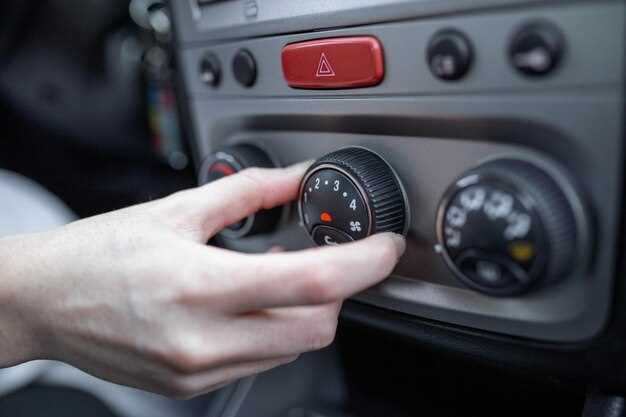
Maintaining comfort within your vehicle, especially during the scorching summer months, relies heavily on the efficiency of your car’s air conditioning system. An outdated or malfunctioning A/C can lead to discomfort and even safety concerns. Upgrading your air conditioning system can enhance both functionality and performance, ensuring that you enjoy a pleasant driving experience.
This comprehensive guide will take you through the necessary steps to upgrade your car’s air conditioning system effectively. By following these detailed instructions, you can save money on professional repairs and increase the lifespan of your A/C unit. From assessing your current system to selecting the right components and executing the upgrade, each step is crucial in achieving optimal results.
Before starting the upgrade process, it is essential to gather the necessary tools and components. Understanding the specific needs of your vehicle and the air conditioning system will also facilitate a smoother upgrade experience. Whether you are a seasoned car enthusiast or a novice looking to improve your vehicle’s comfort, this guide will equip you with valuable insights and practical steps to transform your A/C system.
Evaluate Your Current A/C System Performance

Before considering an upgrade to your car’s air conditioning system, it is essential to assess its current performance. Start by monitoring the temperature of the air coming from the A/C vents. Turn the system to its maximum setting and allow it to run for several minutes. Use a thermometer to check the temperature; ideally, it should be around 40°F (4°C) or lower. If the air is not sufficiently cool, there may be a problem with the system.
Next, listen for unusual noises while the A/C is running. Sounds like hissing, clunking, or squealing can indicate issues such as a refrigerant leak or a failing compressor. Additionally, pay attention to any vibrations in the dashboard, which could signal loose components or mounting brackets.
Check the airflow from the vents by adjusting the fan speed. If you notice a significant reduction in airflow, this could indicate a clogged cabin air filter, a malfunctioning blower motor, or duct blockages. Thoroughly inspect the cabin air filter and replace it if it appears dirty or clogged, as this can significantly impact performance.
Examine the condition of your A/C components, including hoses, belts, and the compressor. Look for signs of wear, such as cracks, leaks, or fraying. Any visible damage may warrant further investigation or replacement before considering an upgrade.
Lastly, evaluate the A/C system’s refrigerant levels. Low refrigerant can lead to inadequate cooling. If you suspect low levels, a professional service can check for leaks and recharge the system if necessary. This evaluation will provide a clear picture of your A/C’s current performance and help you determine if an upgrade is needed.
Select Appropriate Upgrade Components for Your Vehicle
When upgrading your car’s air conditioning system, choosing the right components is crucial for optimal performance and efficiency. Start by assessing your vehicle’s current system to identify any specific needs or limitations. Common components that can be upgraded include the compressor, condenser, evaporator, and components of the refrigerant management system.
The compressor is the heart of the air conditioning system, so consider an upgraded model with higher efficiency and better reliability. Look for a compressor that matches your vehicle’s make and model to ensure compatibility while providing improved cooling capacity.
Next, examine the condenser. An upgraded condenser can significantly enhance heat exchange efficiency, allowing for quicker cooling. Opt for a condenser designed to handle higher pressures and provide better airflow. Ensure it fits your vehicle’s existing framework to avoid installation complications.
Upgrading the evaporator may also help in achieving better cooling performance. A larger or more efficient evaporator can offer improved surface area for heat exchange. Make sure it is compatible with your current system’s refrigerant and configuration.
Consider refreshing the refrigerant management system as well. This includes hoses, O-rings, and expansion valves. Quality parts in these areas can help improve system reliability and reduce the risk of leaks. Always choose components rated for the type of refrigerant your vehicle uses, whether it’s R-134a or a newer refrigerant like R-1234yf.
Lastly, don’t overlook the importance of the cabin air filter. A high-flow filter can improve air quality and enhance airflow inside the vehicle, contributing to overall efficiency while using the air conditioning system.
By carefully selecting each component based on compatibility and performance, you can effectively upgrade your vehicle’s air conditioning system, ensuring enhanced comfort during driving and greater overall system reliability.
Install New Parts and Test the A/C Functionality

Once you have acquired the necessary replacement parts for your air conditioning system, it’s time to install them correctly. Begin by disconnecting the battery to ensure safety during the installation process. Remove the old components such as the compressor, condenser, or evaporator, following the manufacturer’s instructions for your specific vehicle model.
When installing new parts, ensure that all connections are secure and properly sealed to prevent refrigerant leaks. Pay close attention to O-rings and seals; replacing them can prevent future issues. If replacing the compressor, make sure to add the appropriate amount of oil as specified in the service manual to ensure optimal performance.
After all new parts are installed, reconnect the battery and recharge the air conditioning system with refrigerant. Use the correct type and amount specified for your system, as overcharging or undercharging can lead to inefficiency or damage. A vacuum pump might be used beforehand to remove moisture from the system.
Next, test the A/C functionality. Start the vehicle and set the air conditioning to its maximum setting. Monitor the temperature of the air coming from the vents; it should be significantly colder than the outside air. Listen for unusual noises that might indicate installation issues or component malfunction. If the system is not cooling properly, re-check all connections and consider consulting with a professional technician.
Finally, for proper maintenance, consider running the A/C system periodically even in colder months to keep the components lubricated and functioning well. Regular inspections can help detect any arising issues early on.





